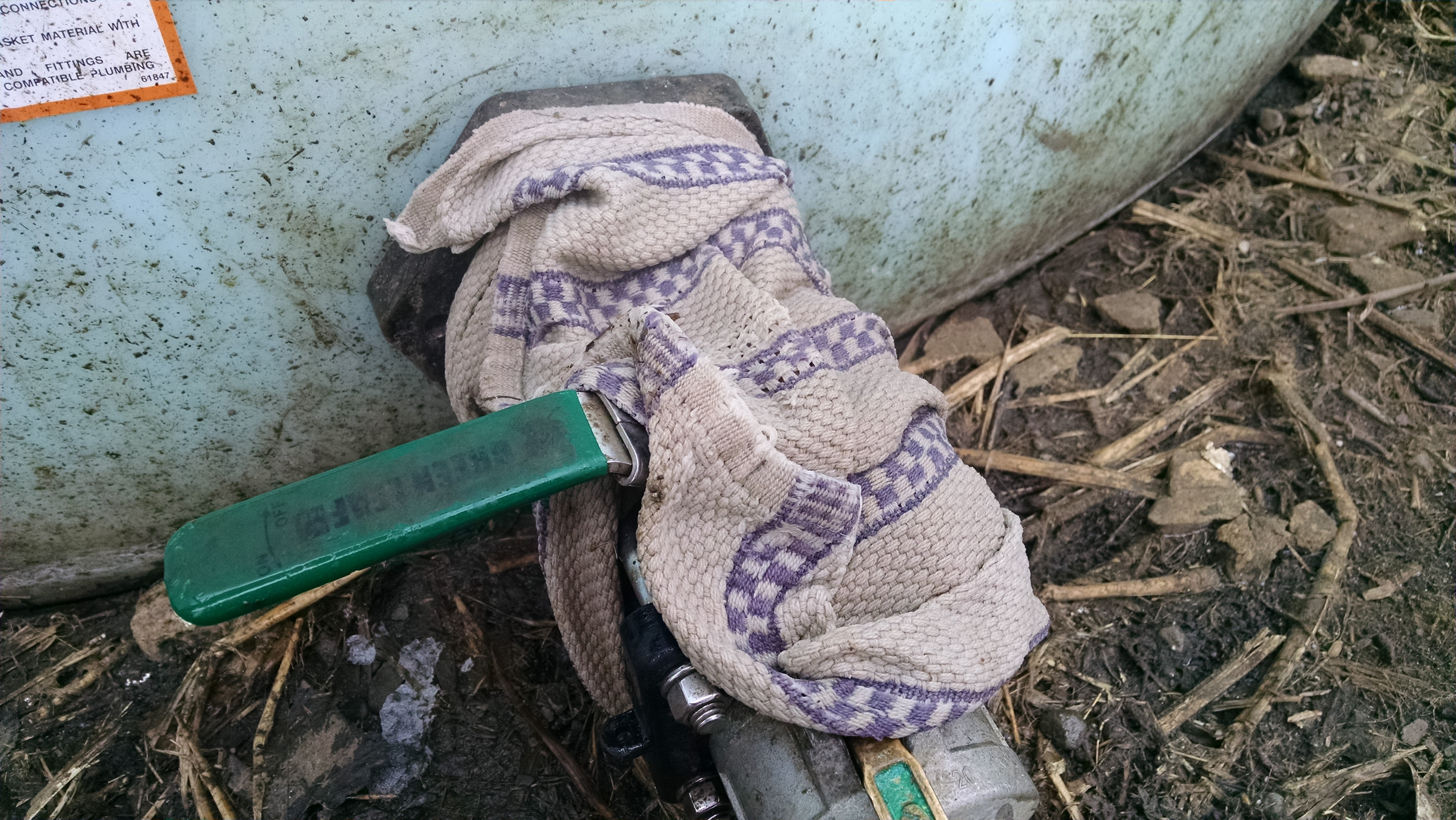When the weather dips below zero, even the protection of the greenhouse is insufficient to prevent the valves on the whey tanks from freezing up. We’ve tried different techniques to fix this, including propane heaters (least efficient method), heat lamps (OK, but still expensive to run), low temperature defroster heat patches (fast and effective, but even very low wattage heaters caused problems by melting pipe threads and valve bodies), and pouring hot water on the valve and down a hose connected to the valve (makes a wet mess that later makes an ice patch, also it requires lugging out several buckets of water).
The ice does not expand enough to crack the polypropylene, but the real risk is breaking the valve while trying to open it. The plastic linking the handle to the sealing ball usually is the first component to give, so most times the valves fail shut or nearly shut. It is a wet and sloppy experience trying to replace a valve holding back 3000 gallons of whey. When that happens, we drill a few 1/2″ holes through the valve body (as quickly as we can), and then attach a hose to drain the tank. It’s not really possible to perform the operation without getting soaked. Thankfully, with the greenhouse and an improved defrosting technique, we haven’t had to replace a valve in two years. Before that? Let’s just say our spare plumbing parts bin contains a big collection of broken valves…
The technique we’ve finally settled on is to bring out a few gallons of hot water and a towel. We soak the towel and then wrap it around the valve. After a minute of so, remove the towel, soak it again, and reapply. The towel does a much better job of holding the heat close to the valve. After a few minutes the ice starts to soften up, whey starts to trickle through, and by gently working the handle back and forth we are able to clear the ice plug. Douglas Adams would be pleased that we remembered our towels.


2 thoughts on “Defroster”
Hi Rachel, I wonder if U could try what they do on Mobile Home Pipes, we wrap the pipes under the house with some type of electric wiring that keeps them from freezing. U might want to check that out. In Christ, Miss Mitzi.
Mitzi
“To the law and to the testimony: if they speak not according to this word, it is because there is no light in them.” Isaiah 8:20
We have tried various wrapping and heat tapes, but the short length of the plumbing makes it hard to get enough contact. We tried some low temperature heat patches from McMaster-Carr, but those actually melted the plastic (perhaps the patches were defective). So the low-tech hot water method has worked out best for us.